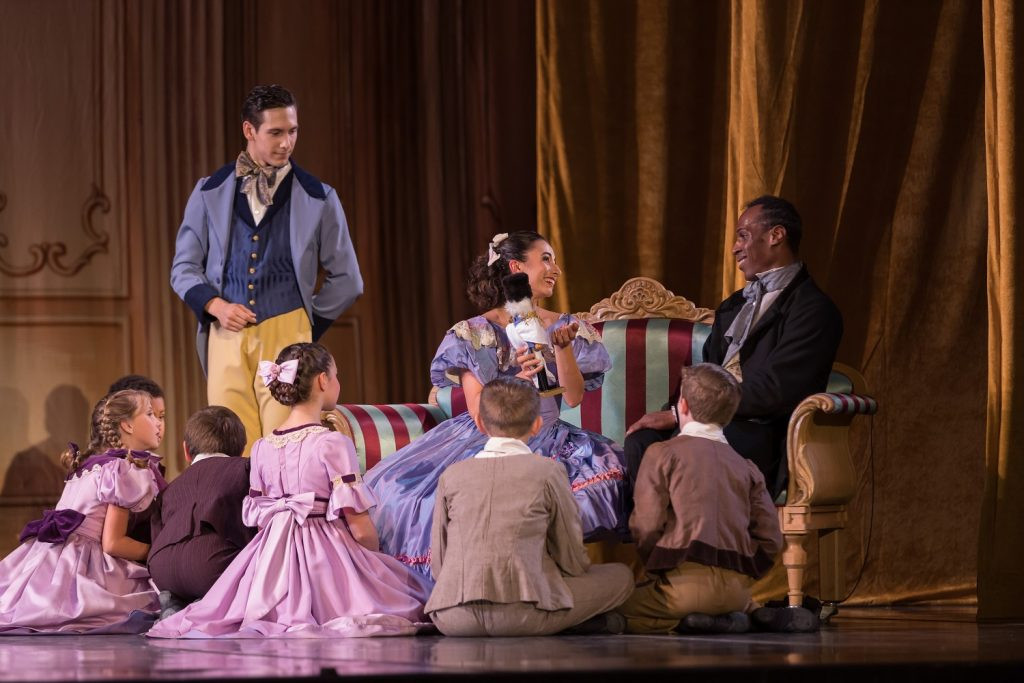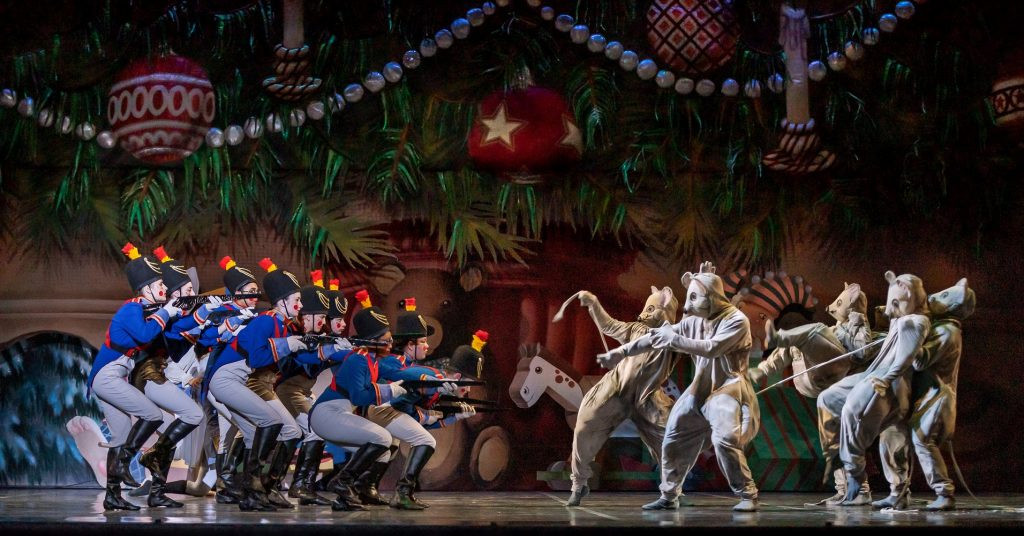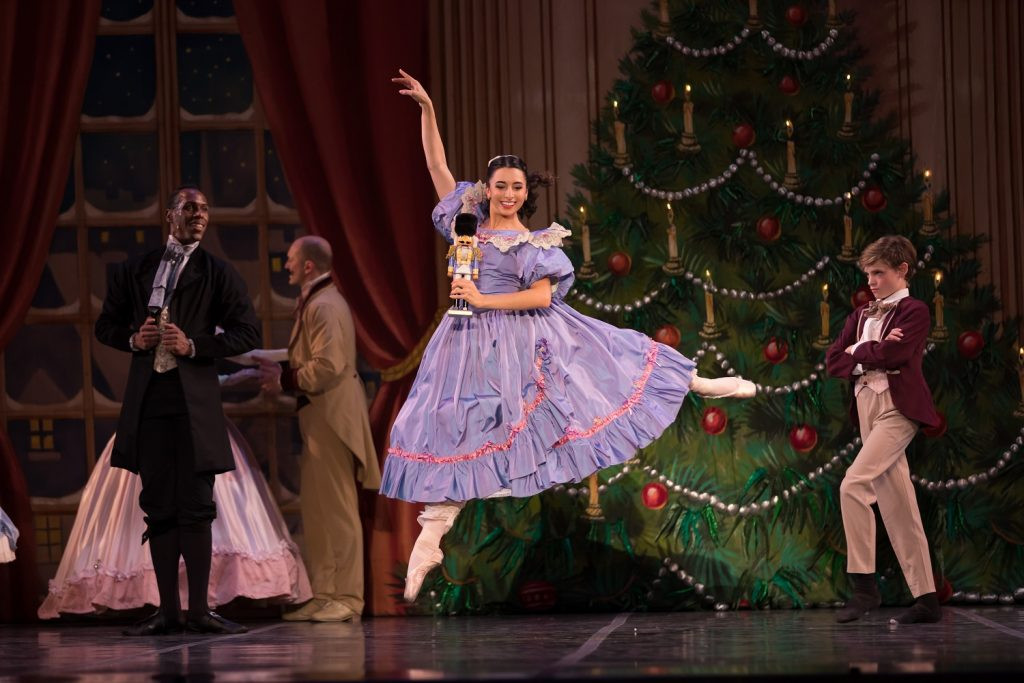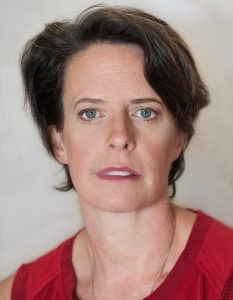When the video clip of Lara Spencer from Good Morning America mocking Prince George for taking ballet lessons surfaced, it ignited a firestorm within the dance community. Initially, I believed exploring the reactions and underlying issues would be a straightforward task, perhaps a brief research project culminating in a concise article outlining the problems and potential solutions within a couple of weeks. I envisioned a short series, starting with an introductory piece, followed by two more articles delving deeper into the topic. How incredibly naive I was.
The realities of bullying, homophobia, misogyny, and skewed gender representation in the world of La Dance are far more complex and deeply rooted than I initially grasped. These issues are not isolated incidents but are interwoven threads in the fabric of the dance world, causing significant harm and stifling talent and ambition. The pervasive lack of empathy, the absence of true inclusion, and the often cruel environment within dance are not just anecdotal; they are vividly illustrated in countless accounts, tearful conversations, and vulnerable responses to simple inquiries about dancer experiences.
Yet, amidst these heartbreaking narratives, a parallel story emerges – dance as a sanctuary, a source of profound connection, and an overwhelming force of love and belonging. This article, the first of two, aims to navigate this dichotomy of light and darkness within the dance spectrum. It seeks to foster open dialogue both within and beyond the dance community, with the hope of promoting greater understanding, inclusivity, and meaningful change in la dance.
This exploration will unfold across two articles to fully address the vastness and complexity of the issues, while honoring the input from dancers and leaders across the dance landscape. This article will specifically tackle bullying and misogyny, examining their manifestations both inside and outside the dance studio. How do bullying patterns, in their various forms, impact dancers as they evolve from students to directors, teachers, and choreographers? The subsequent article will delve into gender representation in dance, focusing on the historical marginalization of dancers who don’t conform to binary gender norms and the encouraging, albeit slow, progress towards inclusivity within mainstream dance.
It is crucial to acknowledge that generalizations will be made. Not all male dancers share identical experiences, nor do all female dancers. Dancers identifying as non-binary face their own distinct challenges, which will be explored in greater detail in the following article.
Before delving into the core issues, it is imperative to address race. Race is intrinsically linked to the challenges of homophobia, misogyny, representation, and power dynamics within la dance. The intersectionality of race with these issues is not a footnote but a substantial chapter in itself, deserving of extensive exploration. While this article will not attempt to comprehensively address the unique experiences of dancers of color, it will acknowledge and integrate race into the discussion where stories and experiences intersect. The focus will primarily be on Western dance forms, specifically ballet and modern dance within traditional company structures.
verb: bully[; to use superior strength or influence to intimidate (someone), typically to force them to do something.]
“Someone perceived as vulnerable.” In the context of la dance, who is more vulnerable than a child, particularly a boy, venturing outside socially prescribed norms to embrace an art form often stereotyped as feminine? Studies indicate that a significant proportion of students, between one in four and one in three, experience bullying, with middle school being a particularly prevalent time.
 Isabella Velasquez, Anthony Cannerella and Bobby Briscoe in Sacramento Ballet
Isabella Velasquez, Anthony Cannerella and Bobby Briscoe in Sacramento Ballet
Sacramento Ballet dancers Isabella Velasquez, Anthony Cannerella, and Bobby Briscoe in “The Nutcracker”, highlighting the artistry and dedication within la dance.
Bullying in la dance manifests in two distinct forms. Firstly, male dancers often face bullying outside the studio from peers unfamiliar with or dismissive of dance. Secondly, and perhaps more insidiously, bullying occurs within the dance studio itself, disproportionately affecting female dancers and those who defy traditional gender expectations. This studio-based bullying can stem from peers, teachers, choreographers, and directors, and even, on occasion, from members of the media.
Understanding these varied forms of bullying is crucial because their consequences are far-reaching and shape the character of dancers who persist in the industry. Many others, sadly, are driven away. This series focuses on those who endure: How do early experiences with bullying – whether as victim, perpetrator, or witness – mold character and leadership qualities? Do the lingering effects of bullying impact gender equality and leadership dynamics as dancers progress in their careers and communities within la dance?
The exploration of gender in dance is not a novel concept. Extensive literature and academic research exist on the subject. What is new and increasingly vital is the specific focus on the intersection of dance with bullying, gender equality, and equitable representation in mainstream la dance. Examining the link between childhood bullying experiences and subsequent leadership styles is essential. What dynamics foster the environments observed in studios nationwide? This is where the Prince George incident re-enters the conversation. It served as a catalyst, prompting a crucial dialogue.
Kathleen McGuire Gaines, a prominent advocate for dancer mental health and founder of Minding the Gap, aptly stated, “I think the situation with Prince George was an important moment for dance. It was cathartic to see the dance world, a space that is so competitive, unify in support of one another. But I think it also serves as an important reminder of what many male dancers have gone through by the time they reach the sanctuary of a pre-professional program or a company. I say “sanctuary” because dance is a space that is led by men, and where men are considered more valuable than women.”
 Andrew Pearson – Photo by Jerry Sandoval
Andrew Pearson – Photo by Jerry Sandoval
Andrew Pearson, a dancer and choreographer, captured in motion, embodying the passion and dedication inherent in la dance.
In stark contrast to the general population statistic of one in four children experiencing bullying, research indicates that nearly 96 percent of boys who participate in dance have endured verbal and/or physical harassment from their peers. Furthermore, data compiled by Doug Risner, a dance professor at Wayne State University in Detroit, reveals that only 32 percent of male dancers receive paternal support for their artistic pursuits. This lack of support is significant. Choosing to dance can create a deep rift within a dancer’s family. The fundamental question then becomes: why? Why are boys who dance targeted for bullying? Is it solely due to their involvement in dance, or is it linked to perceptions of their sexual orientation?
In an interview with Andrew Pearson, a Los Angeles-based dancer and choreographer, his response to this question is insightful. “If you mean bullying based on gender/sexuality – i.e. being bullied because I’m a boy who dances – that happened mostly at school. Never in the studio, never in the neighborhood or with my closer friends.” Pearson’s response highlights that bullying directed at male dancers is often less about the act of dancing itself and more about societal prejudices related to gender and sexuality. The bullying is fueled by the misconception that dance is exclusively for individuals who are gay, queer, or deviate from traditional masculine norms. The power of this form of bullying is substantial and pervasive.
According to Will McCoy, founder of NoBully, “Bullying is becoming more multi-dimensional than ever. With the onset of the digital environment and the connected world that students are growing up in, the worlds they experience are less separate than ever. That is to say, they are always online, and it bleeds into their school experience. We have found that bullying in the traditional sense (physical, verbal, social) is still pervasive in schools, with 1 in 3 students reporting having experienced bullying in their school lives. Layered on top of that, cyber bullying takes place regularly, and the issues that arise from that experience often ripple into the social situations experienced at schools.”
Geographic and cultural contexts seem to influence the prevalence and nature of bullying faced by boys in dance. Informal surveys conducted among students at private studios and AMDA College of the Performing Arts revealed a pattern: boys raised in major coastal cities like Los Angeles reported less peer bullying for dancing compared to students from the Midwest and Southern regions, who experienced more significant bullying. Pearson also touched upon the role of environment, noting, “I grew up near San Francisco and have always been in California. However, I will say that Orange County, and especially Irvine, is one of the more conservative locations in the state. This may have contributed to me staying closeted through most of college. Even in the dance and theater departments, the gay faculty were very discrete and quiet about their personal lives. It gave a message that being out was inappropriate. So, I don’t know if it’s geography specific, but I do think environment plays a role.”
 Kathleen McGuire Gaines – Photo: Nicholas Coppula
Kathleen McGuire Gaines – Photo: Nicholas Coppula
Kathleen McGuire Gaines, a mental health advocate within la dance, emphasizing the importance of dancer well-being and support.
Scott Gormley’s documentary film, Danseur, was inspired by his son’s experience with bullying due to dancing. The film chronicles the journeys of several male dancers at various stages of their careers, though it concludes before they reach leadership positions. “Danseur” is a highly recommended film, offering poignant stories of resilience, triumphs over adversity, and captivating dance. Harper Watters, a soloist with the Houston Ballet, and James Whiteside, a principal with The American Ballet Theatre, are particularly compelling in the film, sharing vulnerable narratives and their proactive efforts to combat bullying and stereotypes in la dance. However, the film’s scope ends before exploring how these dancers navigate leadership roles later in their careers. This raises a crucial question: how do power dynamics shift within the studio environment as dancers progress? This brings us back to the Prince George incident.
Gaines further commented, “I think it is important that we as dancers witnessed the spectacle of a small boy being publicly bullied for being a dancer. It was an important reminder. When we (female identifying dancers) arrive in the dance studio with these men we have often not witnessed first-hand what they went through to get there. And while we as women were celebrated and encouraged for our love of dance as children (outside of the studio), some of these men have literally lost relationships with family members.”
 Andrew Pearson – Photo by Jerry Sandoval
Andrew Pearson – Photo by Jerry Sandoval
The artistry of Sacramento Ballet, showcasing the collaborative and expressive nature of la dance.
 Anacia Weiskittel – Photo: Marjorie Salvaterra
Anacia Weiskittel – Photo: Marjorie Salvaterra
Anacia Weiskittel, owner and artistic director of Degas Dance Studio, committed to fostering a supportive and inclusive environment within la dance education.
What transpires when boys enter the dance studio environment? For many, the studio becomes a sanctuary, a refuge from external pressures. The reality is that male dancers are often in demand in most dance studios. Gaines describes this phenomenon as “…the golden dance belt, meaning that men are treated differently simply because dance needs them…” Numerous scholarship opportunities specifically target boys pursuing dance. Many schools actively recruit male dancers.
Anacia Weiskittel, owner and artistic director of Degas Dance Studio in Encino, California, shared insights into a program she implemented to address challenges faced by boys in ballet and dance. “For about five years I created a boys full tuition scholarship program in order to help change the culture of boys that danced. I wanted the boys to have a group of peers so that they could learn and grow within this experience. Students in the program didn’t need any prior dance experience and it wasn’t based on potential; only upon pure passion and desire. The only requirements were good behavior, work ethic, a desire to learn, and a minimum of 10 hours a week in all styles (including ballet, jazz, contemporary, hip hop, acro, stretch and conditioning) in addition to performing as members of our team.” Weiskittel emphasized the performance aspect of the program, stating, “If I was going to invest financially in them I needed them to take the commitment seriously and invest in the time. I also felt that the more they were a part of the performances, the more Dads would be in the audiences and would think it was cool, and hopefully break some preconceived stereotypes. Typically, parents put their daughters in dance but they don’t usually consider it for their boys until they are much older and they ask for it themselves. This puts most boys behind for their age (starting at twelve to fourteen years old instead of eight or nine), but they do usually advance quickly. Unfortunately, due to financial reasons and high overhead, I was unable to maintain the nearly $50,000 program. I was pleasantly surprised that even without the scholarship we have maintained the same number of boys dancing seriously in our program.”
Weiskittel’s experience suggests a potential model for other schools to consider, perhaps by removing gender-specific criteria from scholarship programs. Major classical ballet schools often offer scholarships specifically for male dancers. Examples include Princeton Ballet, Metropolitan Ballet, and The Rock School’s Program for Young Boys. Despite this preferential treatment within studios, choosing dance can still be isolating for boys without external support, especially if they are the sole male dancer in their program.
To counteract these negative experiences, several conventions and schools dedicated to nurturing boys in dance have emerged in recent years. Programs at American Ballet Theatre and The Male Dancer Conference aim to provide support and build community for male dancers who may feel isolated in their training environments.
For girls and gender non-conforming dancers, bullying within the studio can be a significant issue. While boys often face external bullying related to perceived sexuality, girls and non-binary dancers are more likely to encounter peer bullying within the studio, often fueled by favoritism, casting decisions, and petty rivalries. Teachers play a crucial role in addressing and preventing such behavior.
Weiskittel elaborates, “In my experience, most if not all of the bullying for boys happens at school or outside and the studio is really a safe haven of friends and support. Many of them won’t tell their school friends they even dance but I am finding that the culture is changing and my younger students now entering junior high school are receiving less criticism, judgments and more support about whoever they want to be. In addition, it helps to have other boys in the [dance] community.” However, she notes, “Girls are a little trickier and bullying is more subtle and socially excluding. It usually has nothing to do with dance specifically.”
Direct intervention is essential to curb this type of bullying. Weiskittel explains her studio’s proactive approach: “At the studio we have several ways of dealing with bullying. First I set strict guidelines that I won’t tolerate it and have kicked out many great dancers or parents that cause drama. In my opinion it is imperative to being open and able to try new things and explore movement for it to be a safe space. We start young with class etiquette, body language and don’t allow simple things like whispering. We talk about us all wanting to keep this a safe and kind space. In addition, when situations occur between students I set up meetings with me and or our peer counselors which are our Junior and Senior High School students that will help mediate conversations and help the students work things out.” Weiskittel’s hands-on approach fosters an open and respectful environment for all dancers.
 Shannon Chain – Photo: Weiferd Watts
Shannon Chain – Photo: Weiferd Watts
Shannon Chain, a former dancer with American Ballet Theatre and Zurich Ballet, now a doctor, highlighting the diverse paths and achievements of individuals within la dance.
As exemplified by Degas Dance Studio, student-to-student bullying (and occasional parent-driven drama) can be managed and minimized through a committed and proactive approach. However, it is the bullying embedded within dance training itself that has enduring consequences, shaping both who ascends to leadership positions and their leadership styles. Boys are often afforded greater opportunities to experiment and explore, while girls are frequently trained to be compliant, quiet, and conforming. Leaders, by definition, are not submissive, silent, or conformist. The compensation for the external bullying faced by boys, combined with the supply-and-demand imbalance of male versus female dancers within studios, creates a dynamic where men are more likely to advance to and remain in leadership roles, while women often follow instructions. This pattern extends into professional dance careers.
Kate Crews Linsley, Academy Principal of Nashville Ballet and a former dancer with Ballet West, bluntly states, “I will be blunt here. Men more than often get the job simply because of their gender and are often not as talented and/or do not have the same work ethic as you and your female counterparts. It’s the old stereotype. Women make up the corps de ballet, but companies kill themselves to hire men. Women are expected to have a certain (sometimes submissive) behavior in the studio as the “ballerinas” and men can use their voice more freely and expressively. These are unwritten norms, but part of the structure of studio life. I have seen directors blatantly speak to female dancers and artistic staff differently due to gender.”
Many dancers and former dancers interviewed for this article preferred anonymity, but the catalog of reported abuses during training and professional careers is extensive: yelling, screaming, expletives, double standards based on gender (and sometimes race), dancers being placed in uncomfortable, even sexually compromising, situations by directors or choreographers, lack of support from directors, and constant body shaming. Such behaviors are often excused as “tough love” or “tradition.” Andrew Pearson observed that “the way dance is taught can often be riddled with bullying.” While all dancers may experience some of this, women often bear the brunt, and the power imbalance exacerbates the consequences. This ingrained culture is so deeply entrenched that many teachers fail to recognize the inequity and inhumanity within it.
Shannon Chain, a former dancer with American Ballet Theatre and the Zurich Ballet, now a physician and mother, recounted a recent experience in a class taught by a renowned teacher in the San Francisco Bay Area. She shared on Facebook: “Nothing like an old ballet teacher to make you feel like complete crap. ‘We are not defined by our fat’ as he grabs my love handles, then…’You don’t need to be beautiful anymore, you used to be’.” This incident underscores the pervasive culture of bullying, particularly male-on-female bullying, where a teacher felt entitled to inappropriately touch and demean a highly accomplished woman simply because it was considered acceptable practice.
“Don’t think dear, do.” – George Balanchine.
 Isabella Velasquez and Eliot Maroney Sutton in Sacamento Ballet
Isabella Velasquez and Eliot Maroney Sutton in Sacamento Ballet
Isabella Velasquez and Eliot Maroney Sutton of Sacramento Ballet in “The Nutcracker,” illustrating the beauty and partnership within la dance performance.
To understand the historical context of gender dynamics in la dance, a brief overview is helpful. Ballet originated in the 15th-century Italian courts of Catherine de Medici and was initially performed exclusively by men. Women did not become central to the art form until the early 19th century with the advent of pointe shoes and the Romantic era. While the onstage balance of power shifted, with male dancers losing societal prestige, power behind the scenes remained largely male-dominated. The romanticized image of the Degas ballerina in tulle, delicately tying pointe shoes, obscures the darker reality that male patrons often exploited dancers, wielding significant influence over their careers and livelihoods.
Societal views evolved again as Russia elevated ballet in the late 19th century, ushering in the modern era. While women began to assume some leadership roles, notably Ninette de Valois, founder of the Royal Ballet, men continued to lead and still predominantly lead ballet companies. The overwhelming percentage of pieces choreographed by men remains striking. This gender imbalance is not solely an American issue; articles from Canada and England highlight similar challenges. While modern dance initially emerged from women challenging classical ballet’s gender constraints, even today, modern dance leadership remains only slightly less male-dominated than ballet.
 Amy Seiwert – Photo: Steve DiBartolomeo
Amy Seiwert – Photo: Steve DiBartolomeo
Amy Seiwert, Artistic Director of Sacramento Ballet and Amy Seiwert’s Imagery, a leading female voice and choreographer in contemporary la dance.
What are the solutions? How can the dance world honor the individual struggles of all dancers while rectifying the gender imbalance in leadership to reflect broader societal demographics? Beyond Kate Crews Linsley and Anacia Weiskittel, conversations with three influential women in ballet leadership provided further insights: Amy Seiwert, Artistic Director of The Sacramento Ballet and founder/Artistic Director of Amy Seiwert’s Imagery; Stella Abrera-Radetsky, principal dancer with American Ballet Theatre and incoming Artistic Director of Kaatsbaan; and Nicole Haskins, ballet choreographer and dance educator.
The first critical step is dismantling ingrained patterns of abuse in dance training. For women especially, finding and using their voices is paramount. Haskins emphasizes “…the power of the ask. Men are not afraid of asking… It is not bizarre or overstepping [to ask for an opportunity].” However, in advocating for themselves, women must avoid replicating the abusive behaviors they have experienced. Breaking the cycle of women needing to emulate male leadership styles is crucial. Men who were bullied as children, possibly lacking empathy and harboring anger, and raised in a system that devalues women, often perpetuate abuse. Conscious effort is required to disrupt this intergenerational trauma.
Many dancers, including myself, have observed that while abusive teachers and directors exist across genders, some of the most damaging experiences come from female leaders. Linsley notes, “Interestingly enough, I have found that the harshest critics and most complicated choreographers and coaches I have worked with have been women. I feel that the standard of ballet, the issues with weight, idealism and perfection have come from females that were treated in a certain way and that they understand that these things are how the ballet world works and if they were told these things, so should the dancers that they are now working with. That this behavior of shame is the way that we work in the ballet world and that it should continue based on tradition and standard.”
Gaines echoes this sentiment: “Sometimes female leaders in dance are the most supportive and gracious figures you will encounter, but all too often the opposite happens as well. There can be a mentality among female leaders that they struggled, they proved themselves, they were abused and minimized, so they must ensure you go through the same. Either because they believe that is how you “make a dancer,” or because they think you should have to prove yourself like they did. The abuse of women by women in dance culture is important. The truth is that there is an issue of generational trauma in dance. Because abusive practices and behaviors were normalized for your teacher, they pass them on without thought. I felt minimized by several male leaders as a dancer, but the most abusive teacher I encountered was a woman, and she is still in a position of power over dance students today.”
This struggle to maintain authenticity persists as women ascend to leadership. Linsley reflects, “It is interesting to continuously feel that in a traditionally female driven art form the closer you get to upper leadership positions the more you need to be a powerhouse and elite to be considered and have staying power at this level. I still feel that if I had similar qualifications to a male counterpart, that the male would be chosen. This could be a result of my past or an old story, but I would like to change that belief system, if not for myself, but for future generations. We should ALL be considered for our worth on our merits, not our gender.”
Achieving genuine change demands a conscious and collective effort from all leaders, present and future, within la dance. While initiatives like women’s choreography festivals and seasons dedicated to female choreographers are valuable, many leaders caution against viewing them as definitive signs of progress. Until women are seamlessly integrated into the everyday leadership structure of la dance, these initiatives remain temporary measures.
Haskins emphasizes the importance of historical awareness: “We need to be more cognizant of where ballet came from…until we address where the problems, and by problems I mean implicit and institutional biases, came from, we won’t be able to really address the gender imbalance. I think we need to examine how we got to the place where women don’t feel comfortable asking for opportunities.” She advocates for bias training and for leaders to actively “get down in the weeds” to restructure systems.
 Nicole Haskins – Photo: Tatiana Wills
Nicole Haskins – Photo: Tatiana Wills
Nicole Haskins, a ballet choreographer and dance educator, advocating for systemic change and greater inclusivity within la dance.
Beyond identifying what needs to change, concrete positive actions are essential. Mentorship emerged as a powerful theme in all conversations. Whether through one-on-one guidance or structured programs, mentorship is key to fostering change. Creating programs that prioritize mentorship is a tangible step towards reshaping the industry. Both Seiwert and Haskins benefited from opportunities to choreograph for Smuin Contemporary American Ballet while still company members, a rare opportunity for women in ballet. Seiwert specifically credits Michael Smuin as a pivotal choreographic mentor. Haskins also valued her seven years with Sacramento Ballet, where she participated in a choreographic workshop open to all company members, facilitating broader participation for women by integrating creative exploration into their existing training. She spoke passionately about the need for “explore without pressure” and expressed gratitude for these companies’ emphasis on the “value of the creative process.”
These workshops directly counter the tendency to undermine women’s creative confidence, a form of bullying prevalent in la dance. Seiwert observes, “Young women are taught to be “perfect” and that they are a dime a dozen. Young men are put on scholarship and given solos. This is all happening in developmental years, when the part of your brain that processes emotion isn’t connected to the logic part. As a field, we need to seriously change how we are treating young women while still developing strong, technical artists.” Haskins contrasts this with the pressure on women to “put all of their eggs in the performance basket.” In contrast to this limited approach, Abrera-Radetsky credits ABT Artistic Director Kevin McKenzie for recognizing her programming talent, supporting her passion for “using her dance platform to benefit charity,” and “fostering the mentality to be creative, innovative and to trust her instincts” as she transitions into artistic directorship.
Kate Linsley – Photo courtesy of Nashville Ballet
Seiwert, Abrera-Radetsky, and Weiskittel are actively creating similar mentorship opportunities for emerging dancers. Seiwert’s Imagery recently launched Imagery’s Artistic Fellowship, an inclusive program designed to mentor choreographers. Abrera-Radetsky is establishing similar opportunities at Kaatsbaan, providing choreographers with dedicated time, space, and dancers free from the pressures of commissioned work. At the student level, Weiskittel has developed a robust choreography program at her school. “I try to change this dynamic [of only males being encouraged to make new work] in my studio in a couple of ways. We teach choreography composition and improv flow at a very young age with all genders. Our studio is more inclusive when it comes to ballet in that we treat every student regardless of their (stereotypical facility) for ballet so that everyone is being trained at the highest levels based on their passion and work ethic instead of purely facility. I believe that even if we can’t change the professional ballet industry when it comes to body-types and genetic composition that we can still train some of the next ballet choreographers, directors, teachers and help each student find their personal dance paths in all styles on stage and behind the scenes.”
Returning to the Lara Spencer/Prince George incident, a positive outcome was the unified and powerful response from the female dance community, defending and honoring their male colleagues, partners, and students. This organic uprising was a source of hope. However, the reciprocal action is still awaited – for companies and male leaders and dancers to consistently advocate for the women who teach, dance, and contribute their voices to la dance.
Kathleen McGuire Gaines concluded her statement with a powerful call to action: “I think it is important that we as dancers witnessed the spectacle of a small boy being publicly bullied for being a dancer. It was an important reminder. When we arrive in the dance studio with these men we have often not witnessed first-hand what they went through to get there. And while we as women were celebrated and encouraged for our love of dance as children, some of these men have literally lost relationships with family members for the privilege of “the golden dance belt.” So, we all pay for it. For the love of this artform. We just do it in different ways and at different times. No one gets to skip the toll booth. I think it is important for female dancers to remember this and avoid seething if I were a guy I wouldn’t have to be as good. But equally as important is that men in dance use their privilege within dance spaces to advocate for and protect women who are being belittled and abused before their eyes.”
Teaser for next article:
Gender representation in Dance: Beyond the Binary: More from Andrew Pearson, Amy Seiwert, Kate Crews Linsley and Anacia Weiskittel, as well as additional conversations with Katy Pyle, the artistic director of Ballez, Sean Dorsey, Los Angeles dancers Annie Grove and Grace Horrocks, and dance educator Courtney Bold.
Written by Nancy Dobbs Owen for LA Dance Chronicle, January 6, 2020.
Featured image: Isabella Velasquez and Anthony Caneralla in Sacramento Ballet’s “The Nutcracker” – Photo: Chris Hardy

